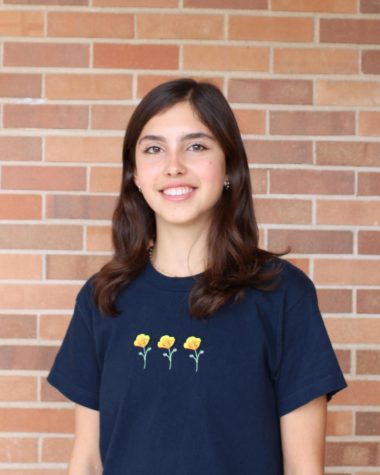Colleges and COVID-19: How universities return to learning
September 25, 2020
Amidst the COVID-19 pandemic, unforeseen circumstances have changed how many students will continue to learn at the start of the new school year. Even at Fremd, students have begun to take classes in a fully remote setting, with limited in-person academic support sessions. The challenges of maintaining social distancing while instilling a sense of school community during the pandemic have altered how many schools will resume, but has created especially significant changes in how universities continue to educate.
Due to the circumstances of the pandemic, concerns for the health and safety of students rise as some schools attempt to reopen. A New York Times survey found at least 88,000 positive college cases of coronavirus in the U.S. as of Sept. 10.
Returning to universities in large numbers is a potential health hazard, which has caused many schools to take new approaches to resuming the year.
According to The Chronicle of Higher Education that collects data on nearly 3,000 higher education institutions in the U.S., 34 percent of universities are returning primarily online this fall. Other reopening strategies include classes fully online, primarily in-person, fully in-person, or a hybrid.
However, with many classes moving online, the traditional experience of living on-campus may not be available in all cases. Schools are generally placing limitations on the number of students living on-campus and adhering to detailed safety protocol. Universities have followed an array of strategies regarding residence, ranging from completely closed to fully open.
For those that are opening, there will likely be a decreased number of students per dorm in addition to 6-foot distancing and mask-wearing when outside the room.
At Loyola University, classes began Aug. 24 and have resumed primarily online with the exception of certain lab-based science courses.
“There are about 200 students living on campus,” Director of Executive and Strategic Communications at Loyola Christian Anderson, said. “That said, the University is open. Our libraries, student union, fitness center, advising services, and other offices and buildings remain open.”
Other schools intending to reopen with in-person classes, including the University of Wisconsin-Madison, have had to quickly change reopening plans due to a drastic increase in positive cases. The school moved classes online after beginning with two weeks of in-person classes. Nearly 2,000 cases were reported on-campus and almost one-third of dorm residents were placed in quarantine.
In a news conference, University of Wisconsin-Madison Chancellor Rebecca Blank emphasized the need to keep students at school in order to prevent further spread of the virus.
“This is their home,” Blank said. “They’re paying rent. It’s where they are. The more interactions we have with them, the more we can work with them, I think in many ways, the better off we are.”
Further measures taken to prevent the spread of cases at many schools also include the offering of on-campus testing. Some are even requiring frequent students tests to find and address positive cases quickly.
At Iowa State University, a testing facility recently opened on-campus to help prevent the spread of the virus.
“Iowa State’s 28.8 percent positivity percentage for those tested on campus during the second week of class is not unexpected as a result of the university’s targeted testing strategy, which focuses on testing individuals who are symptomatic or potentially exposed to someone with COVID-19” an Iowa State University report said.
The University of Illinois Urbana-Champaign has also seen an increase in cases, even after implementing a massive testing program that conducts between 10,000 and 15,000 saliva-based coronavirus tests per day. The school mandated a two-week lockdown for undergraduates to limit interactions that may produce further spread.
As colleges reopen, most are seeing an increase in cases. In particular, those that have reopened in person. Cities with large populations of college students have become major centers for the spread of the virus.
Although masks and social-distancing regulations have become a commonality when meeting in class, safety concerns are raised due to the lack of enforcement of regulations at student social events.
Partying without compliance to social distancing regulations and mask wearing has created a surge in cases.
In some instances, including a recent gathering of students from Miami University, students are hosting parties even after they know they’ve tested positive for the coronavirus.
Body camera footage released from the Oxford Police Department showed a student admitting to having a party that surpassed the 10-person limit allowed at gatherings per the city’s ordinance, even after testing positive for coronavirus a week earlier. Social distancing and mask-wearing were also disregarded at the event.
“So, you’re not quarantining if you’re mixing with other people,” the police officer said. “This is what we’re trying to prevent.”
Universities looking to reopen are presented with the challenge of addressing concerns related to student social gatherings.
Sporting events have also become COVID-19 hotspots. At Florida State University, the University of Kansas, and University of Texas at Austin, thousands of fans were allowed into stadiums without face masks to watch the first college football games of the season, which provoked much criticism.
As schools separated their students with screens and 6 foot social distancing requirements, they began to face an entirely new obstacle: maintaining a communal bond among students and faculty. At Loyola University, programs have been created in order to engage students in activities outside of academic work.
“Experts across the university in medicine, ministry, social work and wellness help connect the community with services and virtual spaces where they can find comfort, care, and professional development to navigate this weird and uncertain time,” said Anderson. “We have been very intentional and invested in creating a vibrant and varied program of virtual engagement opportunities where students can connect and collaborate in education, research, service projects with community organizations, and also for worship, socializing and fun.”
At this time, in-person activities may not be possible in all areas so technology can be a method of bridging the gap between students and the university.
New circumstances have affected nearly every aspect of the 2020-2021 school year, but many schools remain dedicated to providing students educational opportunities and support.


